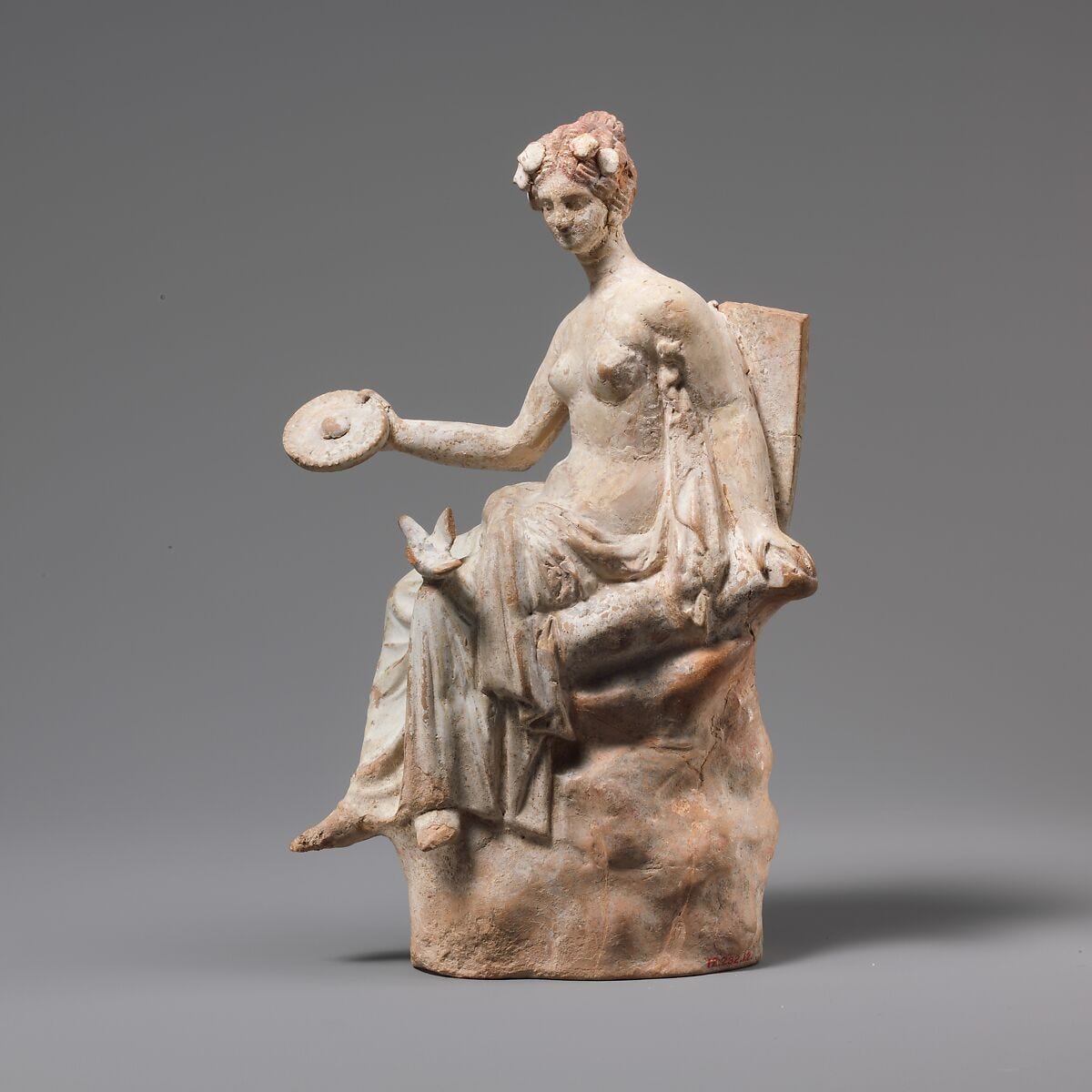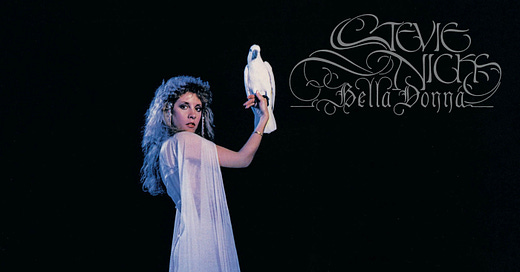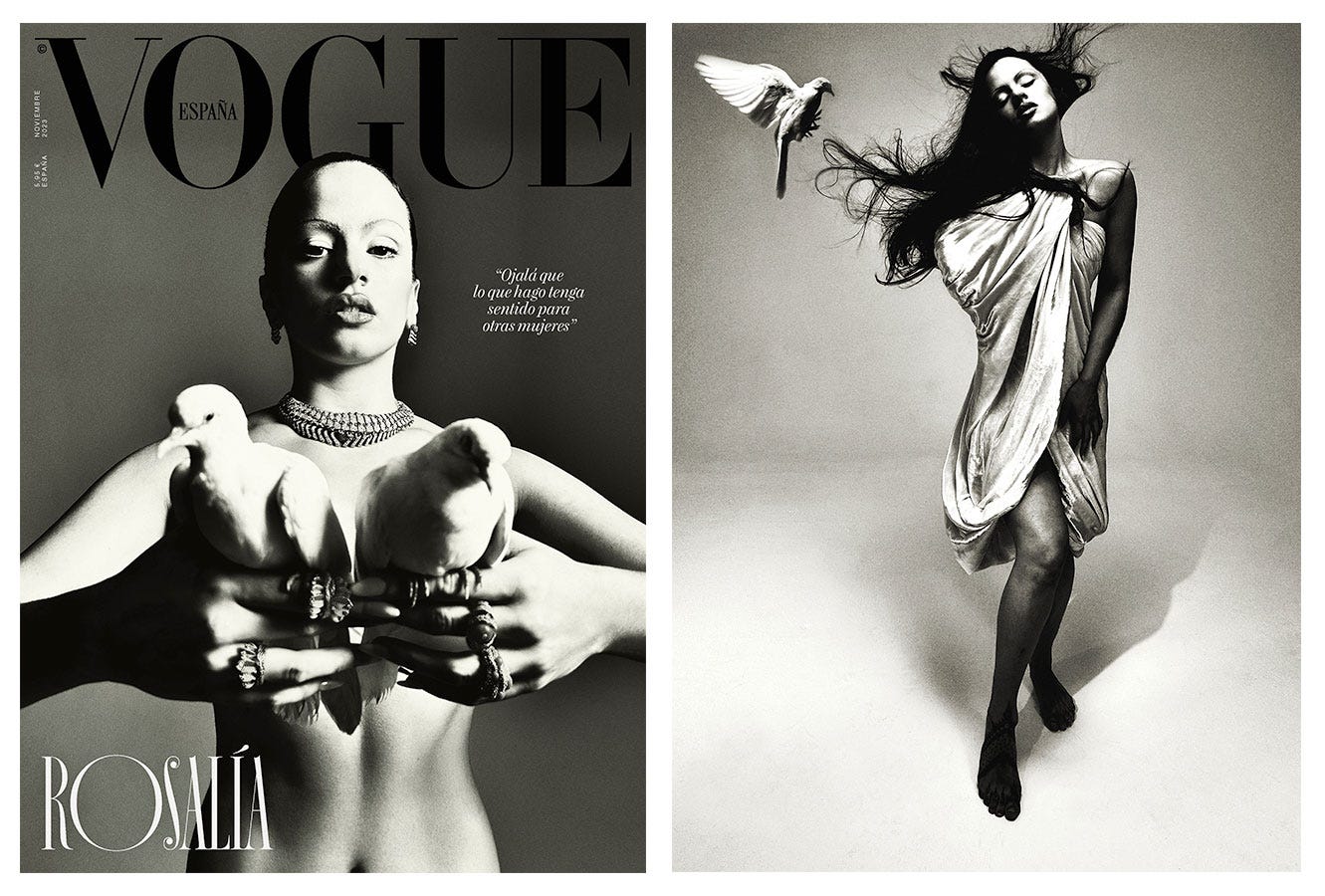The Woman & The Dove
Investigating the powerful relationship between the feminine and the bird on album covers and beyond.
The ancient goddesses of love and beauty harken back to the days of Mesopotamia with Inanna-Ishtar, to Ancient Greece with Aphrodite, and Ancient Rome with Venus. The goddesses evoked sexuality and desire, “aphrodisiac” helming from the powerful Aphrodite. And while they all possessed a strong sense of power, throughout art history, they were often depicted with doves, birds thought to symbolize serenity. In Terracotta statuette of Aphrodite seated on a rock hailing from the Hellenistic period, 3rd Century BCE, we see a dove, wings spread wide, perched on the knee of the goddess Aphrodite. The sculpture is both stoic and gentle in its balance, juxtaposing the almighty power of the goddess.

Another ancient relic, The Bible, mentions doves numerous times throughout its pages. “The dove, with wings spread and feet tucked up as if in flight, represents the Holy Spirit that appeared over the head of Christ as he was baptized by Saint John the Forerunner (John 1:32)” as noted by The Metropolitan Museum of Art. The bird exemplifies guidance and appears as a sort of messenger throughout the scripture. Since then, the dove has carried symbolism into the modern age, coming to also stand for peace.
In January 1949, Pablo Picasso cemented the bird’s imagery with peace when, according to Artsy, “Henri Matisse presented [him] with a gift: a snow-white Milanese pigeon. Using the bird as his model, Picasso created his renowned lithograph, Dove (1949), which has since become an enduring international symbol of peace. A reproduction of Dove was used as the poster for the 1949 Paris Peace Congress.” The artist’s infatuation with the bird can also be seen in the name of his daughter, Paloma, which translates to pigeon in Spanish.
Last week, British pop singer PinkPantheress released her debut album Heaven knows… The album cover captures the young singer in a dark, mysterious environment, arm propped up on a staircase, with an eerily glowing red door in the background. With wind-swept hair, she lounges in an odalisque pose, a dove mid-flight above her. A new powerhouse in British music, PinkPantheress represents a new generation of female musicians. Back in February of this year, the musician’s single “Boy’s a liar Pt. 2” featuring Ice Spice broke into Billboard’s Hot 100 at No. 14. Her songs span in scope from love to heartbreak and power, all expressed in a demure, nonchalant vocal range.

Upon seeing the PinkPantheress album cover, I immediately thought of the cover of Bella Donna, rock icon Stevie Nick’s 1981 debut solo album. Equally as dark and dramatic, we find the Fleetwood Mac singer confidently standing tall, draped in flowing white sheer fabric. With an accent of blue, perhaps suggesting moonlight, a dove casually perches atop her curled hand. Famous for her association with the supernatural, our eyes take in all of Stevie’s powerful magical aura. Her infamous relationships described on and off her records resemble Inanna-Ishtar in her battle of love and war.

This past September, when visiting Guanajuato, Mexico, I found myself flipping through vintage records in a small local shop. As I scoured the bins, I was stopped by the hauntingly beautiful black and white cover of Mari Trini’s Solo Para Ti. The grainy image of the singer softly holding a white dove against her cheek once again evokes a powerful relationship between the feminine and the bird. Both of their eyes stare into the camera as if in sync, one spirit together. Hailing from Spain and coming to popularity in the 1970s, Mari wrote songs of protest against the dictatorship of Francisco Franco. As written in The Guardian, “Her intonation, phrasing and Parisian-bohemian style (wearing jeans on television, as she did, was considered outrageous) brought French song to Spain in a series of pop ballads, such as the 1972 Yo no soy esa (That's not me). Franco's Spain was so repressive that this song by a woman refusing a subordinate role ("That's not me/I'm not your simple quiet young miss") was heard by a new generation as a call to freedom.”
The lineage of female icons and doves continues on with the cover of Patti Smith Group’s 1979 record Wave and, even more recently, with Latin sensation Rosalía on the cover of November’s Vogue España.
Upon the release of Rosalía’s Vogue España cover, the internet went awash with art references. from the styles of Lee Miller to Richard Avedon. Alongside these great notes, I also can’t help but see remnants of early statues of the goddesses, like the Terracotta statue I mentioned in the introduction. The black-and-white processing of the photos utilizes high contrast, almost turning the singer into a marble sculpture herself. In these two specific photos below, she is also nude or dressed sparingly, much like early depictions of Aphrodite and Venus.
With this recent emergence of doves in pop culture alongside important female figures, PinkPantherress, Rosalía, and beyond, I can’t help but smile at the hidden easter egg representing the long legacy of the goddesses of love and beauty, old and new.
The Art of Cover Art is a free educational and inspirational resource. If you have $5/ month to spare, it would be very helpful in furthering my research. Or, if you think a friend might enjoy this newsletter, the best way to pay it forward is by sharing!








Awesome overview of this iconic combination!
I really enjoy reading your ‘Stack. Such a wonderful mix of visual art and music.